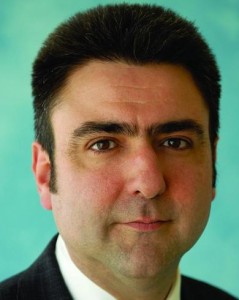
As the global infrastructure sector experiences another bumper M&A year, financial sponsors are playing an ever-increasing role.
Merger and acquisition activity in the field of global infrastructure has been on a phenomenal scale, according to research compiled by
European deals account for US$150bn and both the global and European totals are not far removed from the sector records set in 2006, which resulted in respective deal totals of US$342bn and US$180bn.
Michael Wilkins, head of infrastructure finance ratings at S&P, says: “Looking at recent M&A activity across the infrastructure sector, some interesting trends are clearly emerging. Notably, financial sponsors – such as infrastructure funds, private-equity players and pension funds – now account for more than 20% of global infrastructure deals, up from just 6% in 1998.”
One of the key drivers to the sector consolidation, according to the S&P report, has been “asset-hungry infrastructure funds”, the number of which has been increasing over the last few years. The emergence of these dedicated funds has made a significant change to the market over the past few years. At the smaller end, funds can range between US$2m–$500m up to those at the larger end of the spectrum, such as the fund raised by Goldman Sachs that stands at US$6bn.
The destination for much of the European money has been Russia, which has seen deals valued at US$56bn, just over a third of the total seen in Europe so far this year. The changes to the Russian power generation sector are pushing much of this investment, which has risen hugely from the US$3.9bn seen in 2006.
Spain has also been a significant target market for the sector this year, having seen deals worth US$48bn, with much consolidation seen in the utilities sector.
Peter Kernan, head of European Utilities at S&P, explains: “Utility consolidation among the main players in Spain has probably gone as far as it can and further activity in Iberia is now likely to come from the second-tier providers.”
Despite the tightening in the credit markets, transactions are still being done, although the covenant packages are becoming more protective of creditors and the pricing has had to change to accommodate the risk priorities of the lenders.
Michael Wilkins suggests that we may also see private equity players retreating from the infrastructure space, moving back into the more traditional industrial sectors and hybrid infrastructure areas such as car parks, motorway services and telecom towers that are not so clearly in the public glare.
He goes on to say that “investors continue to demonstrate interest in infrastructure assets. The appetite for the sector will continue as long as the underlying characteristics of infrastructure remain the same,” adding that “transactions will need to be well structured, with appropriate creditor protections to attract investors searching for strong credit quality.”


 If you do not receive this within five minutes, please try and sign in again. If the problem persists, please
email:
If you do not receive this within five minutes, please try and sign in again. If the problem persists, please
email: